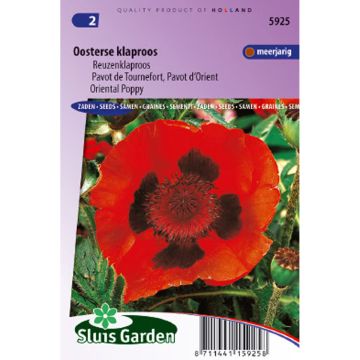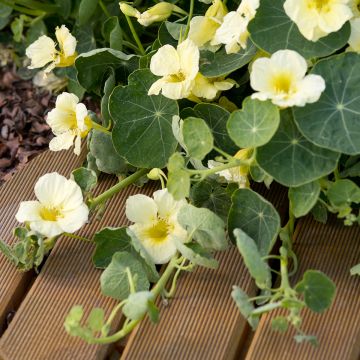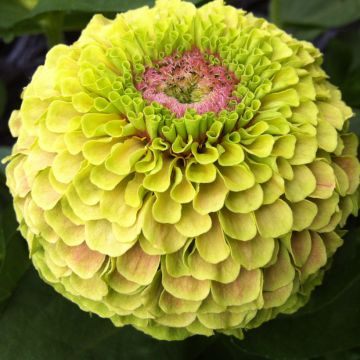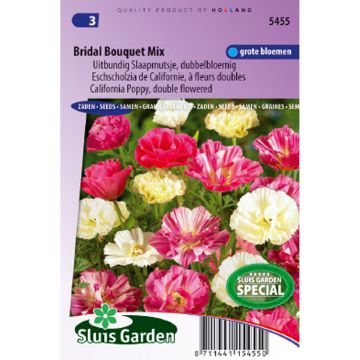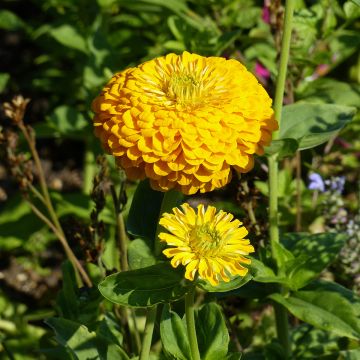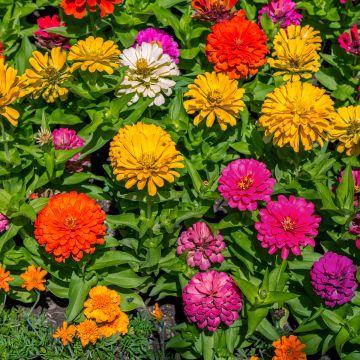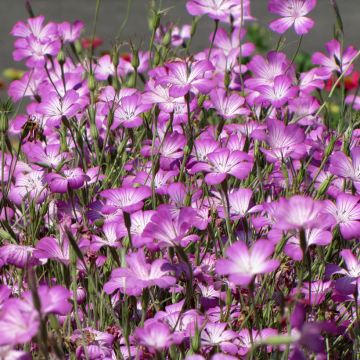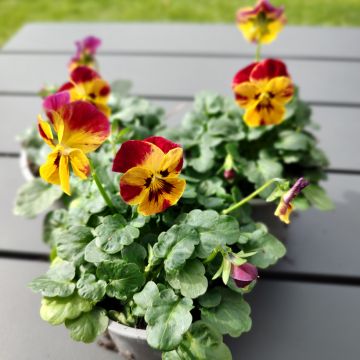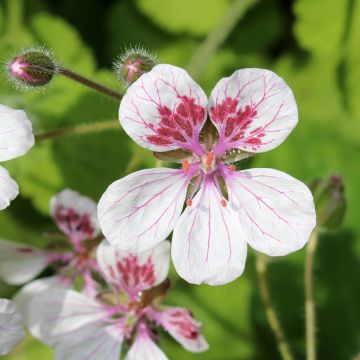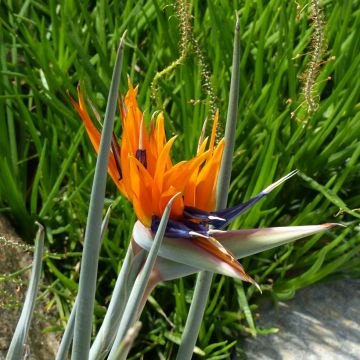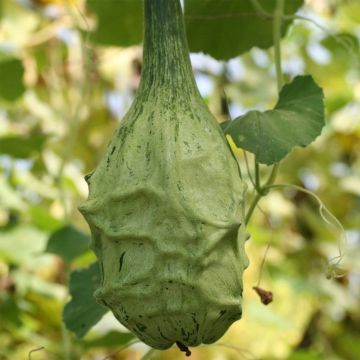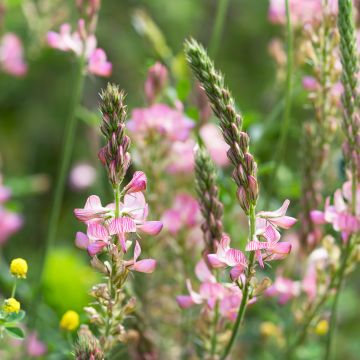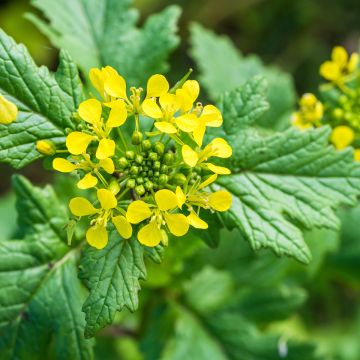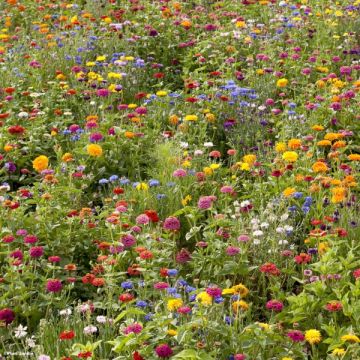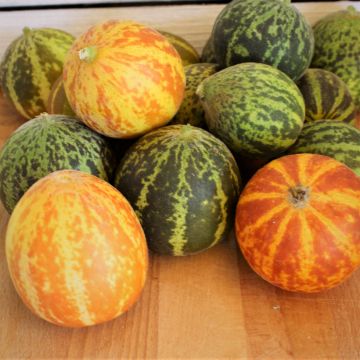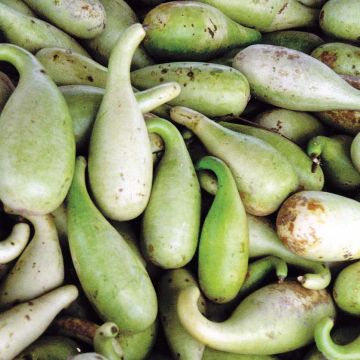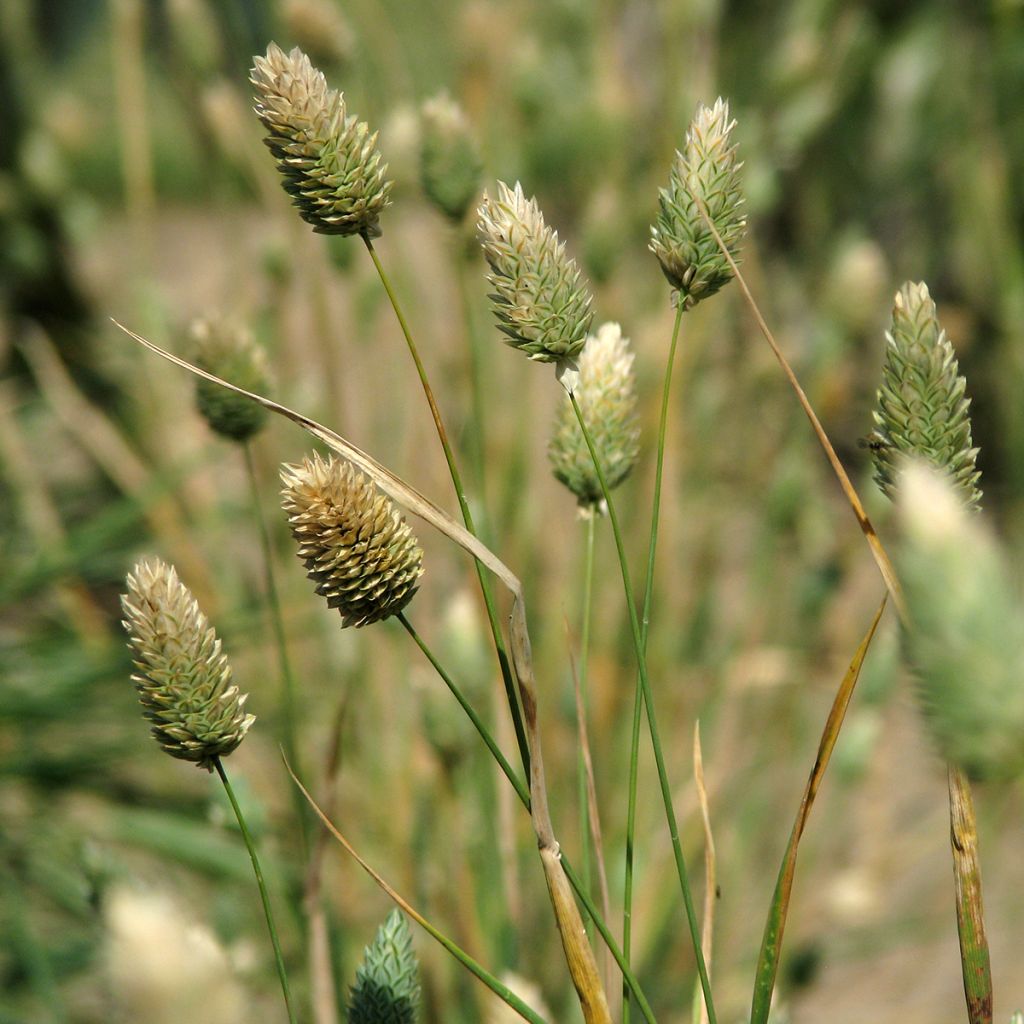

Graines d'Alpiste des Canaries - Phalaris canariensis
Phalaris canariensis
Phalaris canariensis
Canary grass, Canaryseed
This item cannot be shipped to the selected country
Dispatch by letter from €3.90
More information
Schedule delivery date,
and select date in basket
This plant carries a 6 months recovery warranty
More information
We guarantee the quality of our plants for a full growing cycle, and will replace at our expense any plant that fails to recover under normal climatic and planting conditions.
Seed-only orders are dispatched by sealed envelope. The delivery charge for seed-only orders is €3.90.
Does this plant fit my garden?
Set up your Plantfit profile →
Description
The Phalaris canariensis, better known as Canary grass, is an annual grass cultivated as a secondary cereal, particularly as food for certain songbirds. It is also a popular plant in floristry and natural gardens, and a very good forage species. In our gardens, it is appreciated for its graphic spikes with scales striped white and green that are tightly packed, resembling an elongated pine cone. It easily self-seeds in the spring. This plant, native to the Canary Islands, thrives in heat and is water-efficient.
Phalaris canariensis is an annual herbaceous plant belonging to the family of poaceae. Native to the Canary Islands and North Africa, this "grass" is naturalised throughout the Mediterranean region. It is a thermophilic species (heat-loving), sensitive to frost (-5°C (23°F)), but well adapted to drought. It adapts its life cycle to the climate and distribution of precipitation. For example, in the Mediterranean zone, it will germinate much earlier in spring and flower in May-June. Elsewhere, it will flower in June-July.
Canary grass germinates 3 to 5 months after sowing, more quickly with mild temperatures. This grass has a fibrous root and forms a glabrous stem measuring between 50 and 70 cm (20 and 28in) in height. The whole plant forms a dense clump and its foliage is rough to the touch. The basal leaves are ribbon-like and elongated, measuring between 4 and 8 mm (<1in) wide, while the upper leaf has a swollen sheath. Flowering occurs from May to July depending on the climate and lasts about 3 months. The inflorescence is a short, oval to oblong, very dense panicle with a whitish green colour. It has decorative, striped, lanceolate and pointed scales. At the base of the scales, there are small oval, flat, shiny, golden to brownish seeds, resembling a small pasta called bird tongues. Pollination is carried out by the wind.
Canary grass has its place in a garden that leaves room for nature. It is sown in sunny flower beds among other plants, in borders and flowering meadows. It is resistant to heat and drought and requires no maintenance. It is tolerant to diseases, preventing their transmission to subsequent crops, and is not attractive to aphids and slugs. It is easy to establish in small quantities and will self-seed if conditions are favourable. Note that this annual plant is never invasive in much of Europe due to its sensitivity to frost. Its edible seeds will delight birds in late summer and autumn. You can also offer them to the residents of the chicken coop. In a vase, create a beautiful bouquet with cattails, Sorghum, Chinese lanterns, tall sedums, and dahlias, for example.
Report an error about the product description
Flowering
Foliage
Plant habit
Safety measures
Botanical data
Phalaris
canariensis
Poaceae
Canary grass, Canaryseed
Mediterranean
atteinterespiratoire
Cette plante peut entraîner des symptômes allergiques.
Evitez de la planter si vous ou vos proches souffrez de rhinite saisonnière ("rhume des foins").
Davantage d'informations sur https://plantes-risque.info
Other Flower seeds A to Z
Planting and care
Direct sowing in open ground:
Allow for 3 to 5 months between sowing and flowering. The seeds germinate as soon as it is warm enough. Sowing should be done after the last frost, directly in place, in well-prepared, refined, and weeded soil. The ideal period is from April to June. In regions unaffected by frost, sowing can be done in August or September.
Make a furrow: the seed, very fine, should be about 1 cm (0in) below the surface of the soil. The germination temperature is approximately 20 °C (68°F). The soil should be slightly moist to accelerate germination.
Indoor sowing:
Pre-sowing should be done 10 weeks before the last frost. Sow 6 to 8 seeds in a 9 cm (4in) pot and lightly cover with special potting soil. Place your pots in a not too hot place, a greenhouse is ideal. Transplant to the garden after the last nighttime frost, maintaining a distance of about 20 cm (8in) between plants.
Cultivation:
Plant the Canary grass in full sun, in any light, well-drained soil, preferably sandy and neutral to acidic. It tolerates clay but does not like limestone. This grass loves heat, which accelerates its growth. It is not very water-demanding. Phalaris canariensis is resistant to drought and high temperatures, but it also grows on cool and moist soil. It is also less susceptible to diseases and insects.
Sowing period
Intended location
This item has not been reviewed yet - be the first to leave a review about it.
Flower seeds
Haven't found what you were looking for?
Hardiness is the lowest winter temperature a plant can endure without suffering serious damage or even dying. However, hardiness is affected by location (a sheltered area, such as a patio), protection (winter cover) and soil type (hardiness is improved by well-drained soil).

Photo Sharing Terms & Conditions
In order to encourage gardeners to interact and share their experiences, Promesse de fleurs offers various media enabling content to be uploaded onto its Site - in particular via the ‘Photo sharing’ module.
The User agrees to refrain from:
- Posting any content that is illegal, prejudicial, insulting, racist, inciteful to hatred, revisionist, contrary to public decency, that infringes on privacy or on the privacy rights of third parties, in particular the publicity rights of persons and goods, intellectual property rights, or the right to privacy.
- Submitting content on behalf of a third party;
- Impersonate the identity of a third party and/or publish any personal information about a third party;
In general, the User undertakes to refrain from any unethical behaviour.
All Content (in particular text, comments, files, images, photos, videos, creative works, etc.), which may be subject to property or intellectual property rights, image or other private rights, shall remain the property of the User, subject to the limited rights granted by the terms of the licence granted by Promesse de fleurs as stated below. Users are at liberty to publish or not to publish such Content on the Site, notably via the ‘Photo Sharing’ facility, and accept that this Content shall be made public and freely accessible, notably on the Internet.
Users further acknowledge, undertake to have ,and guarantee that they hold all necessary rights and permissions to publish such material on the Site, in particular with regard to the legislation in force pertaining to any privacy, property, intellectual property, image, or contractual rights, or rights of any other nature. By publishing such Content on the Site, Users acknowledge accepting full liability as publishers of the Content within the meaning of the law, and grant Promesse de fleurs, free of charge, an inclusive, worldwide licence for the said Content for the entire duration of its publication, including all reproduction, representation, up/downloading, displaying, performing, transmission, and storage rights.
Users also grant permission for their name to be linked to the Content and accept that this link may not always be made available.
By engaging in posting material, Users consent to their Content becoming automatically accessible on the Internet, in particular on other sites and/or blogs and/or web pages of the Promesse de fleurs site, including in particular social pages and the Promesse de fleurs catalogue.
Users may secure the removal of entrusted content free of charge by issuing a simple request via our contact form.
The flowering period indicated on our website applies to countries and regions located in USDA zone 8 (France, the United Kingdom, Ireland, the Netherlands, etc.)
It will vary according to where you live:
- In zones 9 to 10 (Italy, Spain, Greece, etc.), flowering will occur about 2 to 4 weeks earlier.
- In zones 6 to 7 (Germany, Poland, Slovenia, and lower mountainous regions), flowering will be delayed by 2 to 3 weeks.
- In zone 5 (Central Europe, Scandinavia), blooming will be delayed by 3 to 5 weeks.
In temperate climates, pruning of spring-flowering shrubs (forsythia, spireas, etc.) should be done just after flowering.
Pruning of summer-flowering shrubs (Indian Lilac, Perovskia, etc.) can be done in winter or spring.
In cold regions as well as with frost-sensitive plants, avoid pruning too early when severe frosts may still occur.
The planting period indicated on our website applies to countries and regions located in USDA zone 8 (France, United Kingdom, Ireland, Netherlands).
It will vary according to where you live:
- In Mediterranean zones (Marseille, Madrid, Milan, etc.), autumn and winter are the best planting periods.
- In continental zones (Strasbourg, Munich, Vienna, etc.), delay planting by 2 to 3 weeks in spring and bring it forward by 2 to 4 weeks in autumn.
- In mountainous regions (the Alps, Pyrenees, Carpathians, etc.), it is best to plant in late spring (May-June) or late summer (August-September).
The harvesting period indicated on our website applies to countries and regions in USDA zone 8 (France, England, Ireland, the Netherlands).
In colder areas (Scandinavia, Poland, Austria...) fruit and vegetable harvests are likely to be delayed by 3-4 weeks.
In warmer areas (Italy, Spain, Greece, etc.), harvesting will probably take place earlier, depending on weather conditions.
The sowing periods indicated on our website apply to countries and regions within USDA Zone 8 (France, UK, Ireland, Netherlands).
In colder areas (Scandinavia, Poland, Austria...), delay any outdoor sowing by 3-4 weeks, or sow under glass.
In warmer climes (Italy, Spain, Greece, etc.), bring outdoor sowing forward by a few weeks.

































